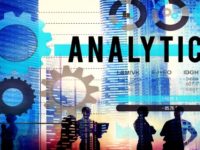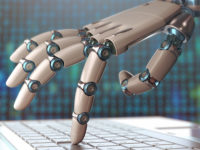Organisations that maximise the possibilities of the Internet of Things more competitively, with a large-scale focus, realise IoT and data analysis go hand-in-hand.
To realise the full potential of the Internet of Things (IoT), organisations need to consider its broader impact on the world, rather than focus on individual cases.
IoT represents an unprecedented opportunity to access groundbreaking insights, and new ways to understand and engage with both customers and “things.” Many companies, however, approach IoT too narrowly, and are not seeing expected results.
Less than 1% of IoT data is currently being used, the McKinsey June 2015 IoT report found. Of this, the uses tend to be for straightforward processes like alarm activation or real-time controls, rather than advanced analytics to help optimise business processes or make predictions.*
A 2015 Enterprise Management Associates global report also found 46% of respondents indicated an IoT strategy was not yet vital to their business processes. A further 25% were yet to adopt any IoT strategy.**
Both reports highlight that the full promise of IoT is yet to materialise for businesses.
IoT is being used to achieve greater reliability, resource efficiency and cost reduction. But the results are often small – sometimes just benefiting a single person or process. Organisations that maximise the possibilities of IoT more competitively, with a large-scale focus, will realise IoT and data analysis go hand-in-hand. To get the most from of IoT, businesses must use advanced analytics to give context to the data collected by IoT devices.
We are in the early stages of transformation based on finely tuned data sets available through IoT. These technologies offer an unparalleled chance to collect, measure and digitally record information about humans and systems, and use this to deliver unique insights.
Businesses need to develop the organisational and technological capabilities to use IoT data at scale, as well as understand the relationships and dependencies across complex systems, for example smart cities, factory floors and supply chains. Businesses should look to invest in an integrated, scalable, analytical platform to enable staff to make sense of the data generated by IoT. It’s only through the deeper application of IoT data that companies can realise new innovations, revenue streams and cost savings.
Organisations that develop a larger, systems-wide vision are more capable of embracing the full benefits of IoT. These include IoT initiatives that optimise entire systems, and that automate and augment complex decision-making. With the right tools, analysing large IoT data sets will let organisations develop more nuanced data-driven decision-making processes. Ultimately, this will help businesses be more productive and profitable than competitors.
*http://www.mckinsey.com/business-functions/business-technology/our-insights/the-internet-of-things-the-value-of-digitizing-the-physical-world
**Enterprise Management Associates, 2015, Insights Across the Hybrid Enterprise: Big Data 2015
Alec Gardner, General Manager – Advanced Analytics, ANZ, Teradata














